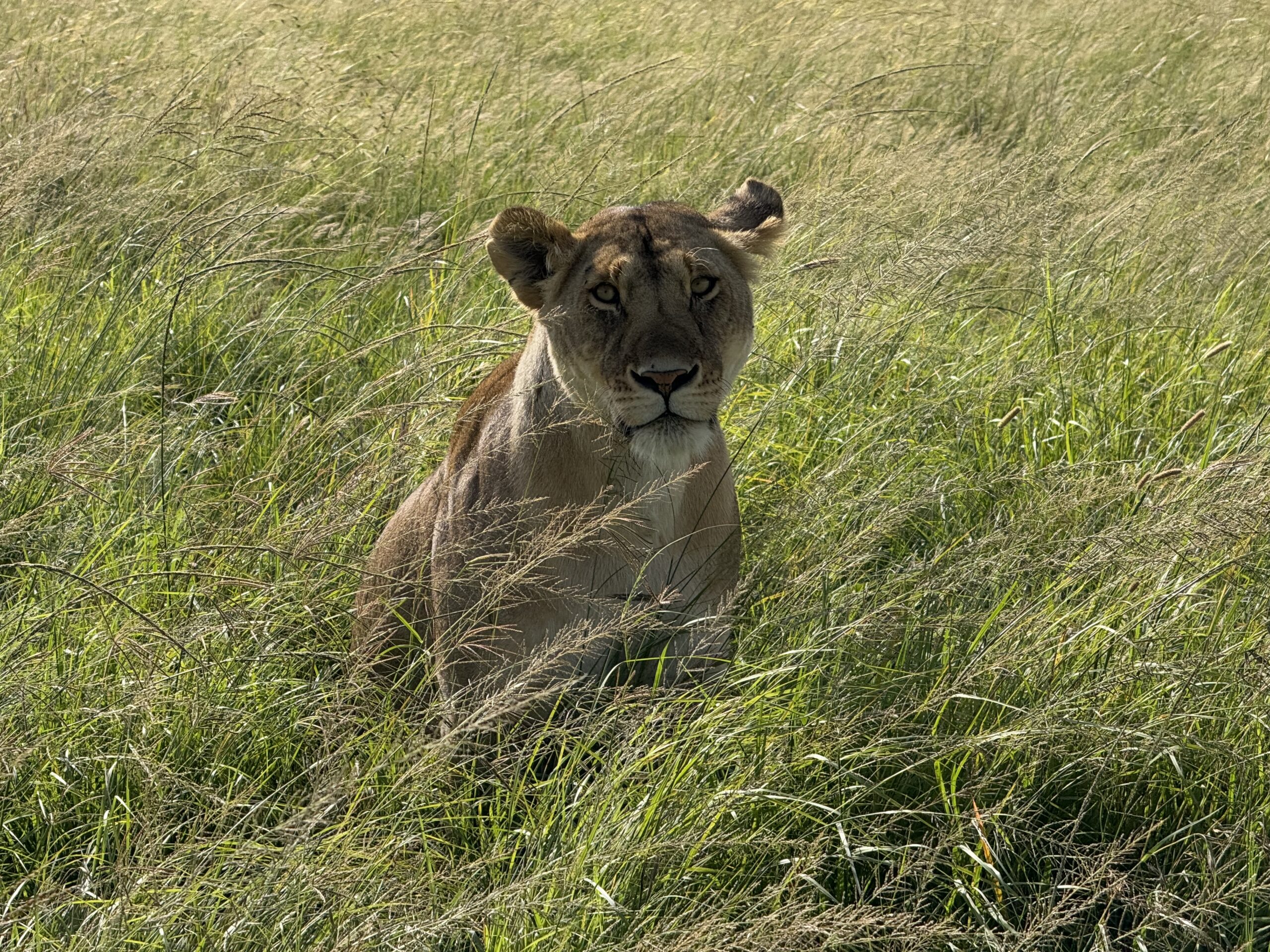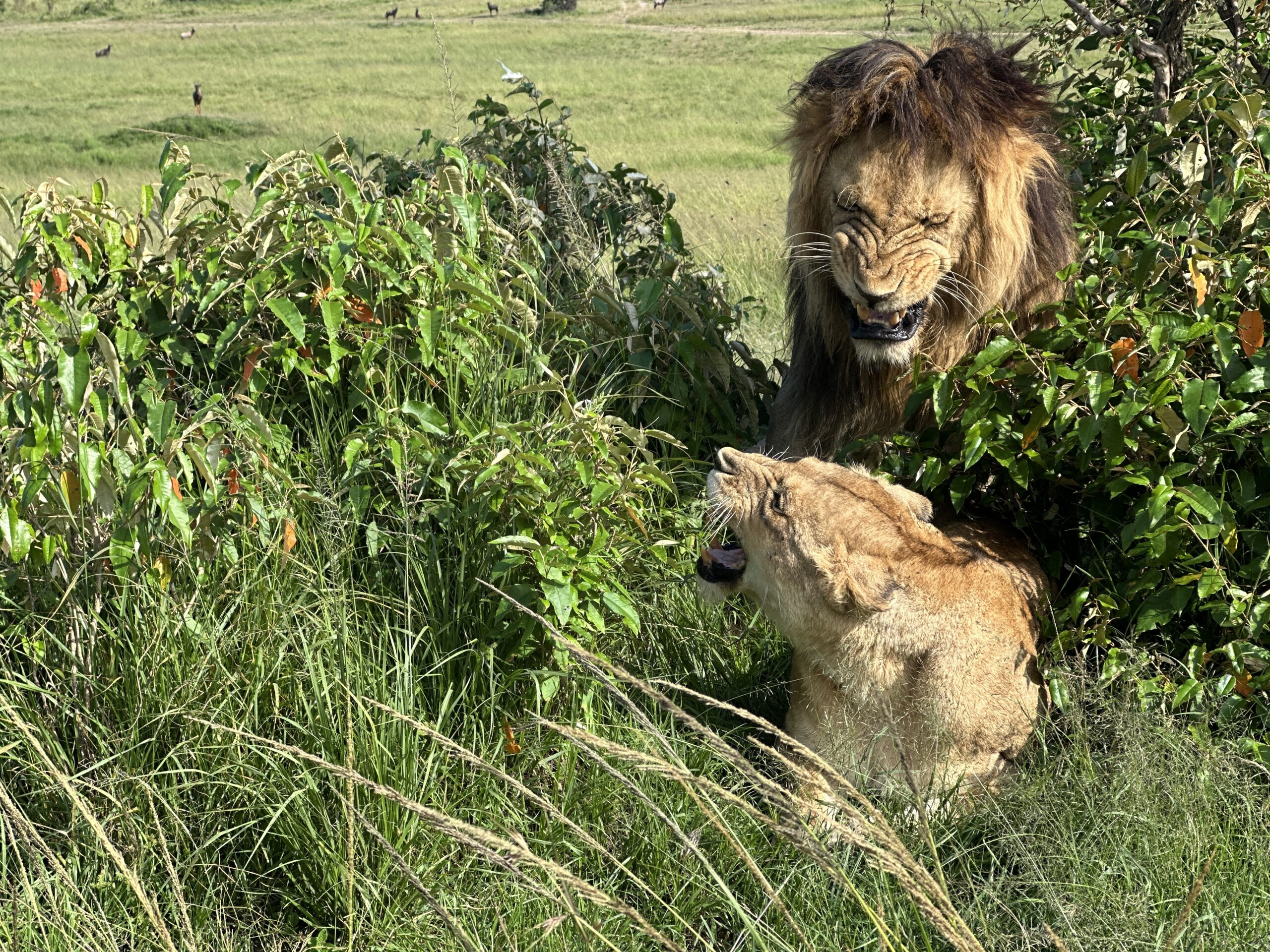




Essential Checklist from Experienced Local Guides
Packing for your first Tanzania safari can feel overwhelming. After years of guiding safaris across the Serengeti, Ngorongoro, and remote parks like Mahale Mountains, I’ve seen every packing mistake imaginable – and learned what truly matters in the African bush.This comprehensive guide covers everything you need (and what to leave at home) for safari in Tanzania’s diverse environments, from dusty plains to highland forests. Whether you’re planning a budget camping safari or luxury lodge experience, these essentials remain the same.
The Golden Rule of Safari Packing
Pack light. Seriously.
Most Tanzania safaris involve multiple camps and lodges. You’ll be loading and unloading bags from safari vehicles regularly. Excess luggage becomes a burden quickly.
Recommended Luggage:
- One soft-sided duffel bag (maximum 15kg for flying safaris)
- One small daypack for game drives
- Camera bag (if you’re a serious photographer)
Hard-shell suitcases don’t work well in safari vehicles and won’t fit in small charter planes for flying safaris to remote parks.
Clothing Essentials for Tanzania Safar The Safari Color Rule
Wear neutral, earthy colors – khaki, brown, olive green, beige, tan. Avoid bright colors, especially white (shows dust immediately) and dark blue or black (attracts tsetse flies).
Why neutral colors matter: While animals don’t react to clothing colors the way people think, bright colors create harsh contrasts in photographs and can disturb the natural environment aesthetic. Rangers and guides universally recommend earth tones.
Clothing Checklist
Tops (Pack 5-7 items):
- 3-4 lightweight, long-sleeve shirts (sun and insect protection)
- 2-3 short-sleeve shirts for hot afternoons
- 1 fleece or warm layer (mornings are cold, especially June-August)
- 1 light windbreaker or rain jacket
Bottoms (Pack 3-4 items):
- 2-3 lightweight pants (zip-off pants are ideal)
- 1-2 shorts (knee-length, not too short)
- 1 pair comfortable jeans or heavier pants for cool evenings
Underwear & Socks :
- 7 pairs underwear (quick-dry fabric recommended)
- 5-7 pairs socks (mix of light and warm)
- 1-2 sports bras for women (dusty roads mean regular bras uncomfortable)
Footwear (Critical!) :
- 1 pair broken-in hiking boots or sturdy walking shoes
- 1 pair comfortable sandals or flip-flops for lodge/camp
- 1 pair sneakers or casual shoes
Never bring new boots on safari . I’ve seen tourists with painful blisters ruin their trip. Break in hiking boots for at least two weeks before departure.
Accessories:
- Wide-brimmed hat (essential for sun protection)
- Sunglasses (high UV protection)
- Buff or bandana (dust protection on rough roads)
- Light scarf for women visiting Zanzibar mosques
Special Considerations by Season
Dry Season (June-October): Cool mornings require warm layers. Bring a fleece or light down jacket. Temperatures can drop to 10°C (50°F) at dawn. By midday it’s 25-30°C (77-86°F), so layering is key.
Rainy Season (March-May, November) : Pack a lightweight rain jacket and waterproof bag covers. The rain usually comes in afternoon thunderstorms, not all-day drizzle.
Highland Parks (Ngorongoro Crater rim): Always colder than lowland parks. Bring warmer layers regardless of season.
Toiletries & Personal Care
Most lodges and tented camps provide basic toiletries, but quality varies. Pack travel-size essentials:
Must-Haves:
- Sunscreen (SPF 50+, bring more than you think you need)
- Insect repellent (DEET 30-50% recommended)
- Lip balm with SPF
- Moisturizer (safari air is very dry)
- Wet wipes or hand sanitizer
- Toilet paper (always carry some, even luxury camps occasionally run out)
- Prescription medications (bring extras in case of delays)
- Basic first aid kit
Women-Specific:
- Feminine hygiene products (bring from home, difficult to find in parks)
- Sports bra or bra with good support (bumpy roads)
Optional but Recommended: -AfterBite or anti-itch cream
- Digestive aids (some travelers experience mild stomach issues)
- Antihistamine for allergies
- Headache medication
Pro Tip: Pack medications in carry-on luggage, not checked bags. Lost luggage happens, and replacing medications in rural Tanzania is nearly impossible.
Need advice on health preparations? Contact David for recommendations on vaccinations, malaria prevention, and medical considerations.
Photography Equipment
Tanzania safaris offer extraordinary photography opportunities. Here’s what works:
Camera Gear:
- Camera body (DSLR or mirrorless recommended)
- Telephoto lens (300mm minimum, 400-600mm ideal for wildlife)
- Wide-angle lens (landscapes, scenic shots)
- Extra batteries (at least 3)
- Multiple memory cards (bring more than you think you need)
- Lens cleaning kit (dust is constant)
- Camera bag with dust protection
- Beanbag for stabilizing camera in vehicle
Why beanbag matters : Safari vehicles have open roofs perfect for photography, but engines vibrate. A beanbag on the vehicle roof or window edge stabilizes your lens better than any tripod.
Phone Photography : Modern smartphones capture excellent safari photos. Bring a phone mount for vehicle photography and extra charging cables.
Common Photography Mistakes:
- Bringing only one battery (they die fast in cold morning air)
- Not enough memory cards (you’ll take thousands of photos)
- Forgetting lens cloth (dust covers your lens within hours)
Electronics & Power
Essential Electronics:
- Phone and chargers
- Camera batteries and chargers
- Power bank (10,000+ mAh capacity)
- Headlamp or flashlight (critical for camping safaris)
- Universal adapter (Tanzania uses UK-style plugs, Type D and G)
Power Reality Check : Most lodges and camps have electricity, but hours vary. Some run on solar power with charging available only during specific hours. Budget camping means no charging – bring fully charged power banks.
Electronic Restrictions : Drones require special permits in Tanzania national parks and are generally prohibited. Don’t bring drones unless you’ve obtained proper authorization beforehand.
Documents & Money
Critical Documents (Keep in Carry-On):
- Passport (valid 6+ months beyond travel dates)
- Visa (can be obtained on arrival or online beforehand)
- Yellow fever vaccination certificate (required if arriving from endemic countries)
- Travel insurance documents
- Flight confirmations
- Hotel/safari booking confirmations
- Emergency contact information
Money Matters:
- US dollars cash (newer bills, post-2006 series)
- Credit card (Visa and Mastercard widely accepted in lodges)
- Small bills for tips ($1, $5, $10 denominations)
Tipping Guidelines:
Safari guide: $20-30 per day per group
Lodge/camp staff: $10-15 per day per guest
Driver/porter: $5-10 per service
I can provide detailed tipping recommendations based on your specific safari when we discuss your itinerary.
Binoculars – Don’t Skip These
Many first-time safari travelers skip binoculars. This is a mistake.
While guides spot wildlife and safari vehicles get close, binoculars enhance your experience dramatically. Watching animal behavior – lions interacting, birds courting, distant elephants – becomes immersive with good binoculars.
Recommended Specs : 8×42 or 10×42 magnification. Compact binoculars (8×25) work but offer less detail.
Budget Option : If you don’t own binoculars, basic 8×42 models start around $50-80 and work perfectly fine.
What NOT to Pack
Learn from others’ mistakes. Leave these at home:
Don’t Bring:
- Camouflage clothing (illegal in Tanzania, associated with military)
- Excessive jewelry or valuables
- Hair dryer (lodges provide them, or you won’t need one)
- More than 2-3 books (pack light, most lodges have book exchanges)
- Fancy clothes (safari is casual, even luxury lodges)
- High heels or dress shoes
- More than one large bag
The Camouflage Rule is Serious : Tanzania law prohibits civilian camouflage clothing. Military-style camo patterns can result in confiscation at airports. This includes children’s camo clothing.
Special Packing for Different Safari Types
Budget Camping Safari
Add these essentials:
- Sleeping bag liner (camps provide sleeping bags but liners add comfort)
- More substantial flashlight
- Extra wet wipes
- Quick-dry towel
- Reusable water bottle
- Snacks (limited options at campsites)
Flying Safari (Mahale, Katavi):
- Weigh your bag before departing
- Pack in soft duffel, not hard suitcase
- Minimize camera gear to essentials
- Share equipment between traveling partners
Zanzibar Beach Extension
Add to your safari packing:
- Swimsuit
- Beach cover-up
- Modest clothing for Stone Town (shoulders and knees covered)
- Underwater camera or phone case
- Reef-safe sunscreen
- Light evening outfit for beach dinners
Packing for Different Travelers
Families with Children:
- Child-size binoculars (increases engagement)
- Travel games for long drives
- Favorite snacks (picky eaters struggle with new foods)
- Extra wet wipes
- Comfort items (favorite stuffed animal, blanket)
- Sunscreen specifically for sensitive skin
Photographers:
- Invest in quality beanbag
- Bring cleaning supplies
- Pack extra storage (you’ll take 500+ photos daily)
- Protective bags for dust
- Download backup software or bring portable hard drive
Honeymooners
Safari is casual, but pack one nice outfit for special lodge dinners or sundowner celebrations. Some luxury lodges offer romantic private dinners.
The Two-Week Test
Pack everything you think you need, then remove 30%. Safari life is simple. You’ll wear the same 3-4 outfits repeatedly. Lodges have laundry service (usually 24-hour turnaround).I’ve guided multi-week safaris with travelers who packed one small bag and were perfectly comfortable.
Last-Minute Packing Tips from the Field
The Night Before:
- Charge all electronics
- Copy important documents (passport, insurance) and email to yourself
- Confirm flight times
- Pack medications in carry-on
- Double-check passport validity
At Kilimanjaro Airport:
- Change some money to Tanzanian shillings (for tips, small purchases)
- Buy local SIM card if you want mobile data
- Confirm your safari pickup arrangements
First Morning on Safari:
- Test all camera equipment
- Apply sunscreen before leaving camp
- Bring layers (mornings are cold)
- Use restroom before departure (limited options during game drives)
What Navel of Africa Provides
When you safari with us, we provide:
- Cooler with drinking water in vehicle
- First aid kit
- Binoculars (if you don’t have your own)
- Vehicle charging ports for phones/cameras
- Local SIM card assistance if needed
We want you comfortable and well-prepared, so ask questions before your trip. There are no silly questions when it comes to packing.
Region-Specific Considerations
Northern Circuit (Serengeti, Ngorongoro, Tarangire)
Dust is constant on roads between parks. Pack:
- Buff or bandana for dust protection
- Glasses case (protect sunglasses from dust)
- Sealed bags for electronics
Mahale Mountains
Humid rainforest environment:
- Quick-dry clothing essential
- Waterproof bags for camera gear
- Sturdy hiking boots (trails can be steep and muddy)
- Long pants and long sleeves (protection during chimp trekking)
Zanzibar
Conservative dress code in Stone Town:
- Shoulders covered
- Knees covered
- Light scarf for women
- Modest beachwear
Shopping in Tanzania
If you forget something, Arusha has well-stocked shops for most items:
- Basic toiletries available
- Safari clothing at reasonable prices
- Camera memory cards (though more expensive than home)
- Sunscreen and insect repellent
However, specialized items (prescription medications, specific camera gear, hiking boots) should come from home.
The Most Important Items
If I could only tell you to pack five things:
- Sunscreen (you’ll burn quickly at the equator)
- Insect repellent (mosquitoes carry malaria)
- Camera with telephoto lens (memories last forever)
- Wide-brimmed hat (sun protection)
- Comfortable broken-in shoes (blisters ruin safaris)
Everything else is secondary.
Final Advice from Your Guide
I’ve seen travelers arrive with enormous suitcases full of unnecessary items, and I’ve seen others arrive with a small backpack and have incredible safaris. The safari experience depends on wildlife, your attitude, and your guide’s expertise – not your wardrobe.Pack thoughtfully, pack light, and focus on what matters: experiencing Tanzania’s extraordinary wilderness.
Have specific packing questions? Every traveler’s needs differ based on fitness level, photography interests, and accommodation types. Contact David directly for personalized packing advice based on your specific safari itinerary.
Contact David Jangwa – Navel of Africa
📧 Email: david@navelofafrica.com
We provide detailed pre-departure information including packing lists customized to your specific safari, season, and accommodation level. No question is too small – we want you fully prepared for your Tanzania adventure.
About the Author: David Michael Jangwa has guided hundreds of safaris across Tanzania, from budget camping trips to luxury flying safaris. As founder of Navel of Africa, he’s helped travelers from around the world prepare for their first African safari, learning what truly matters in the bush and what can be left at home.
